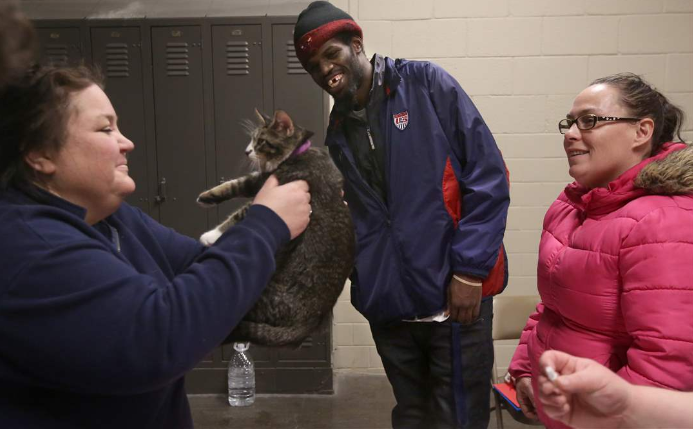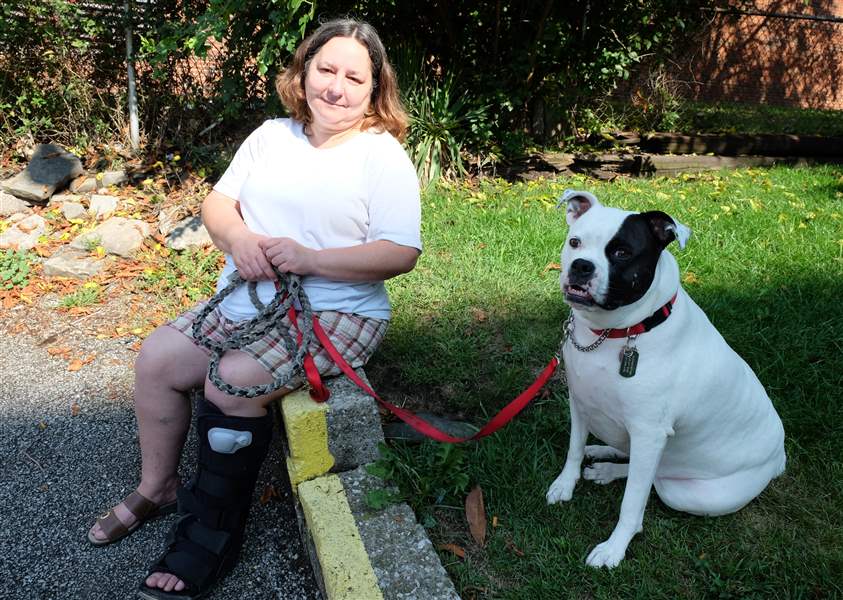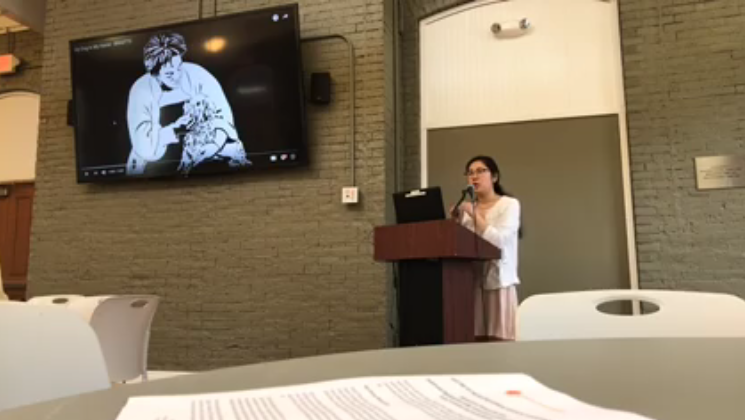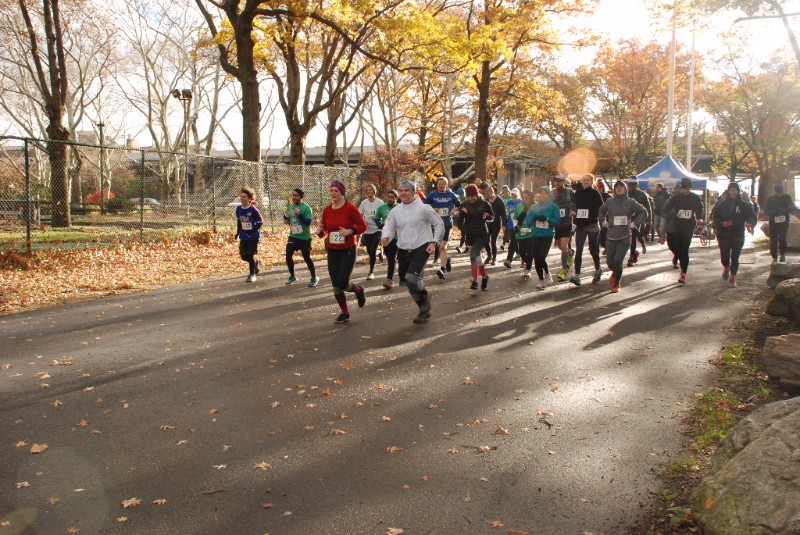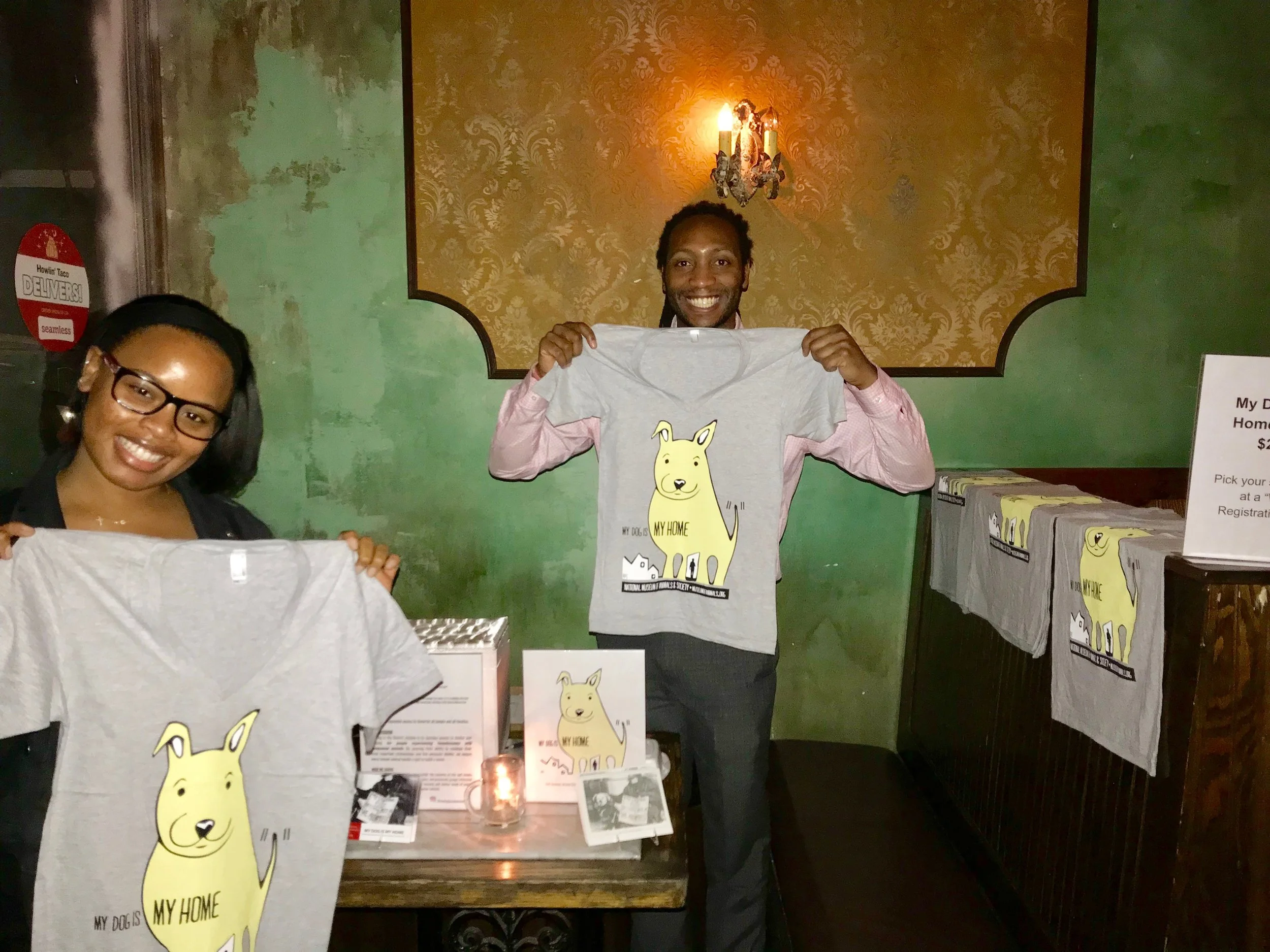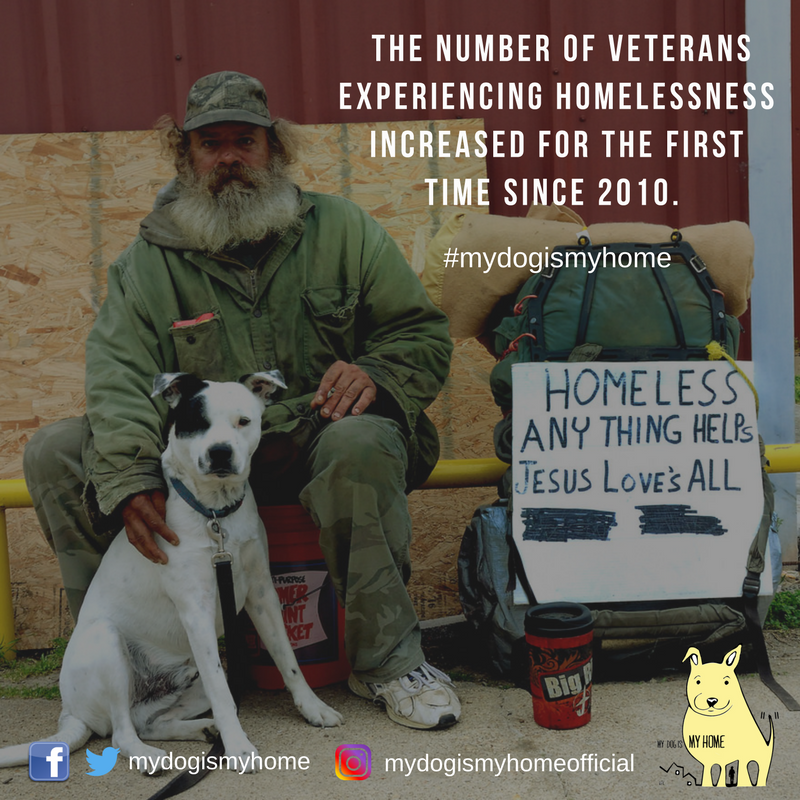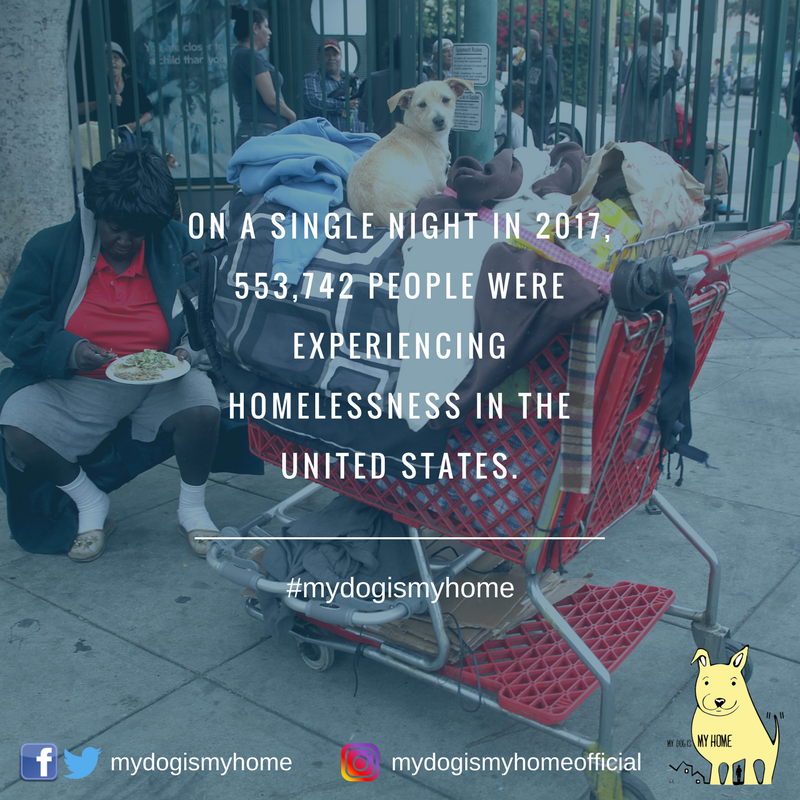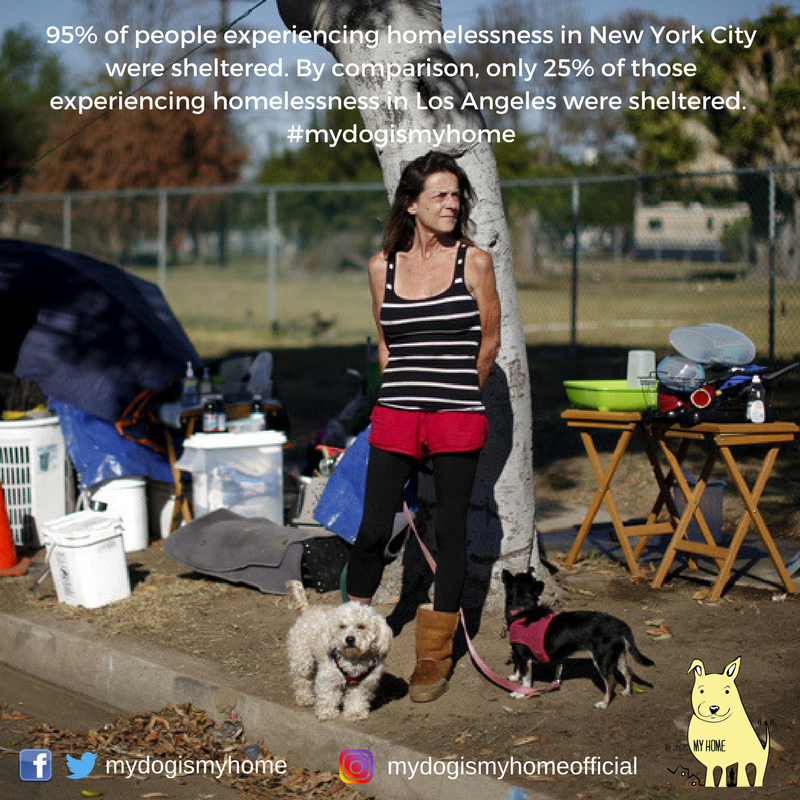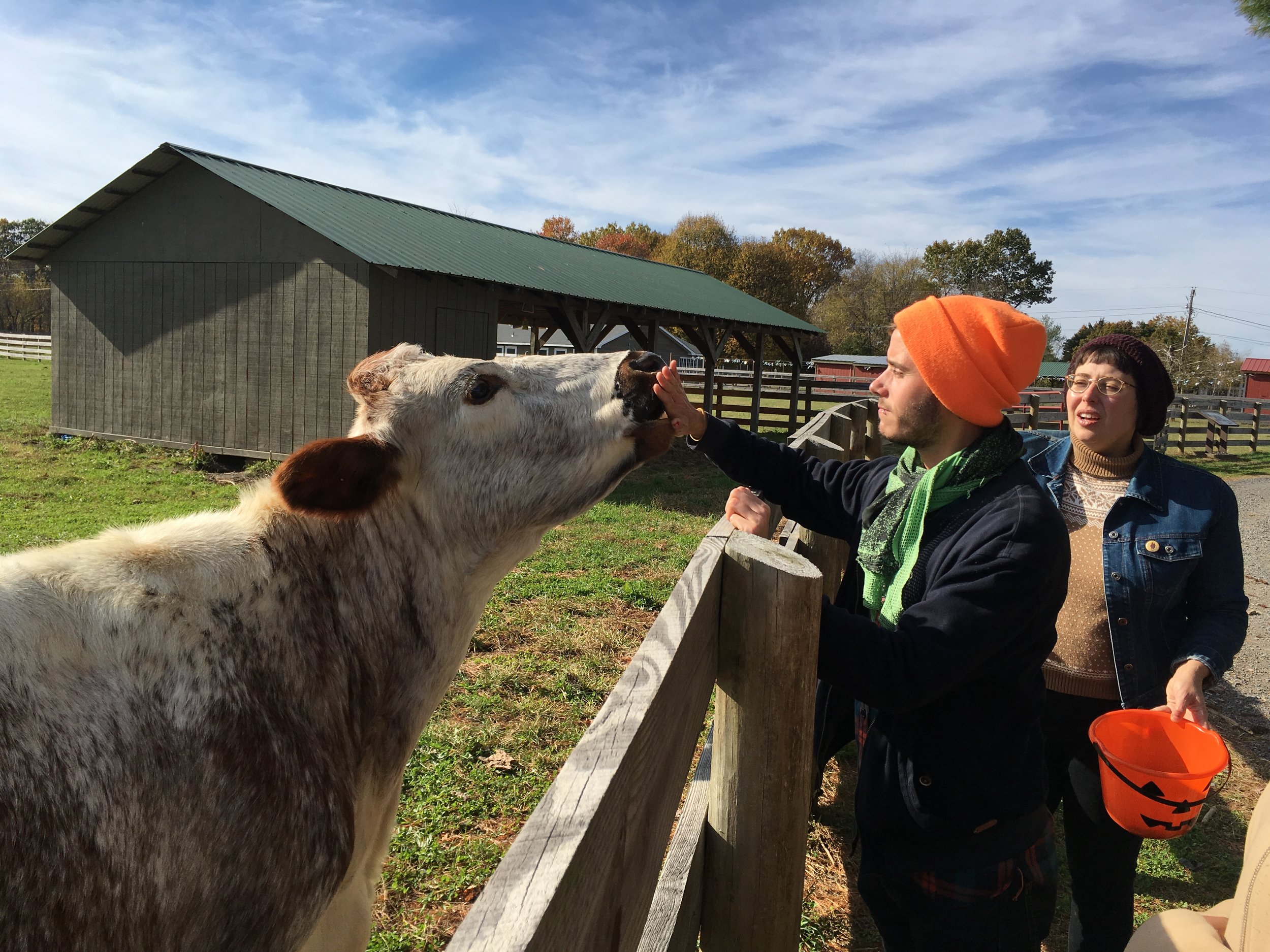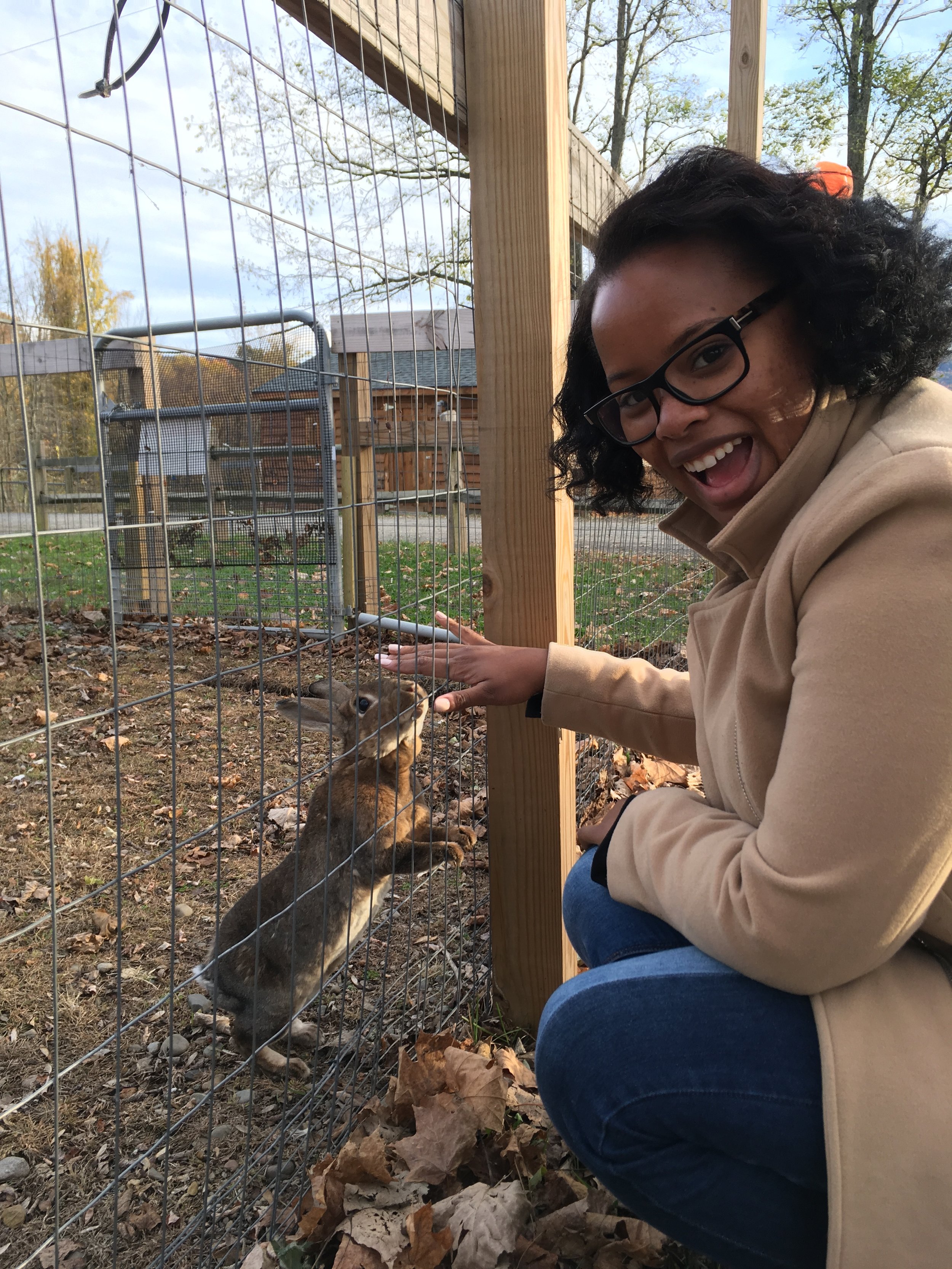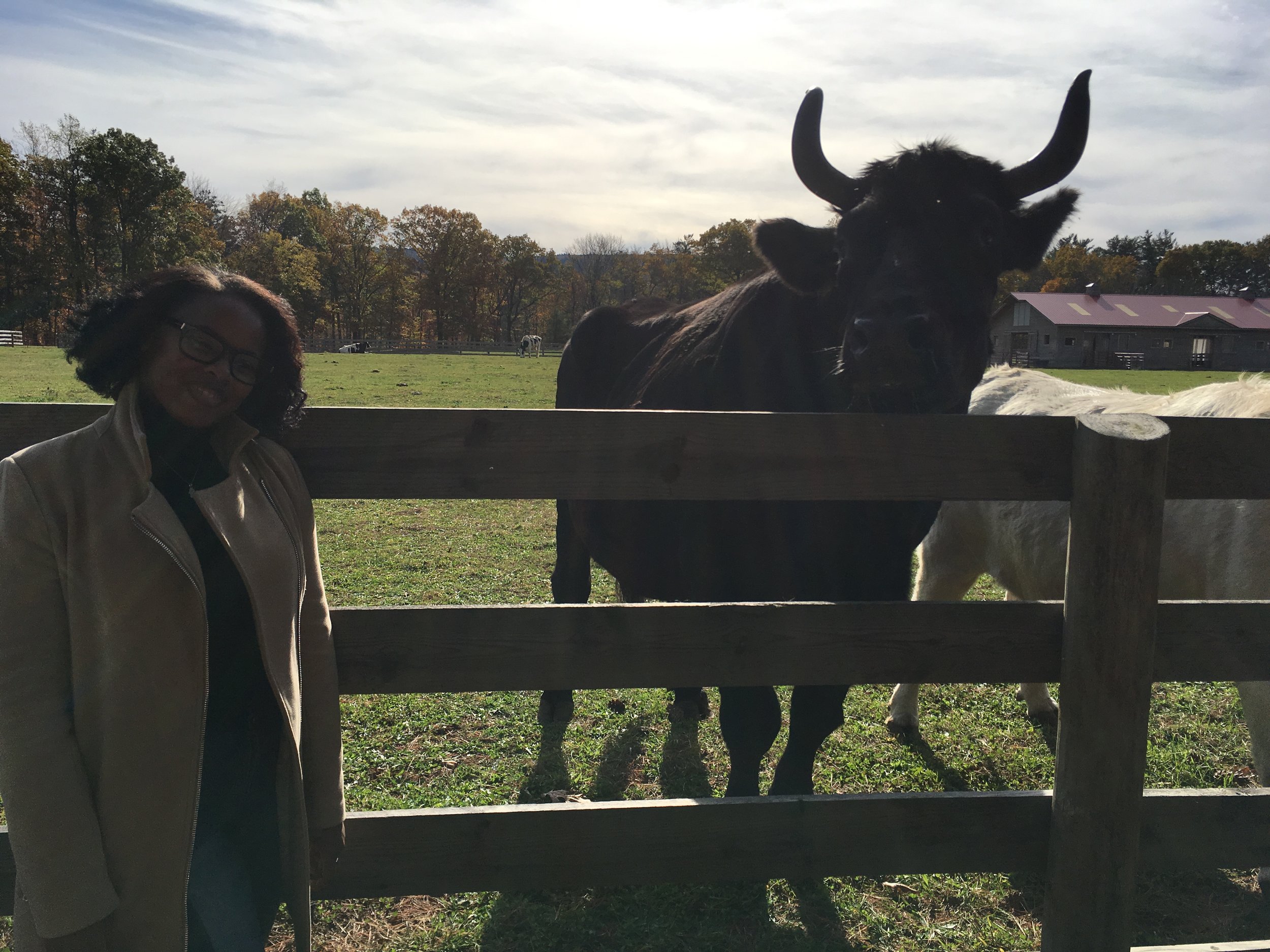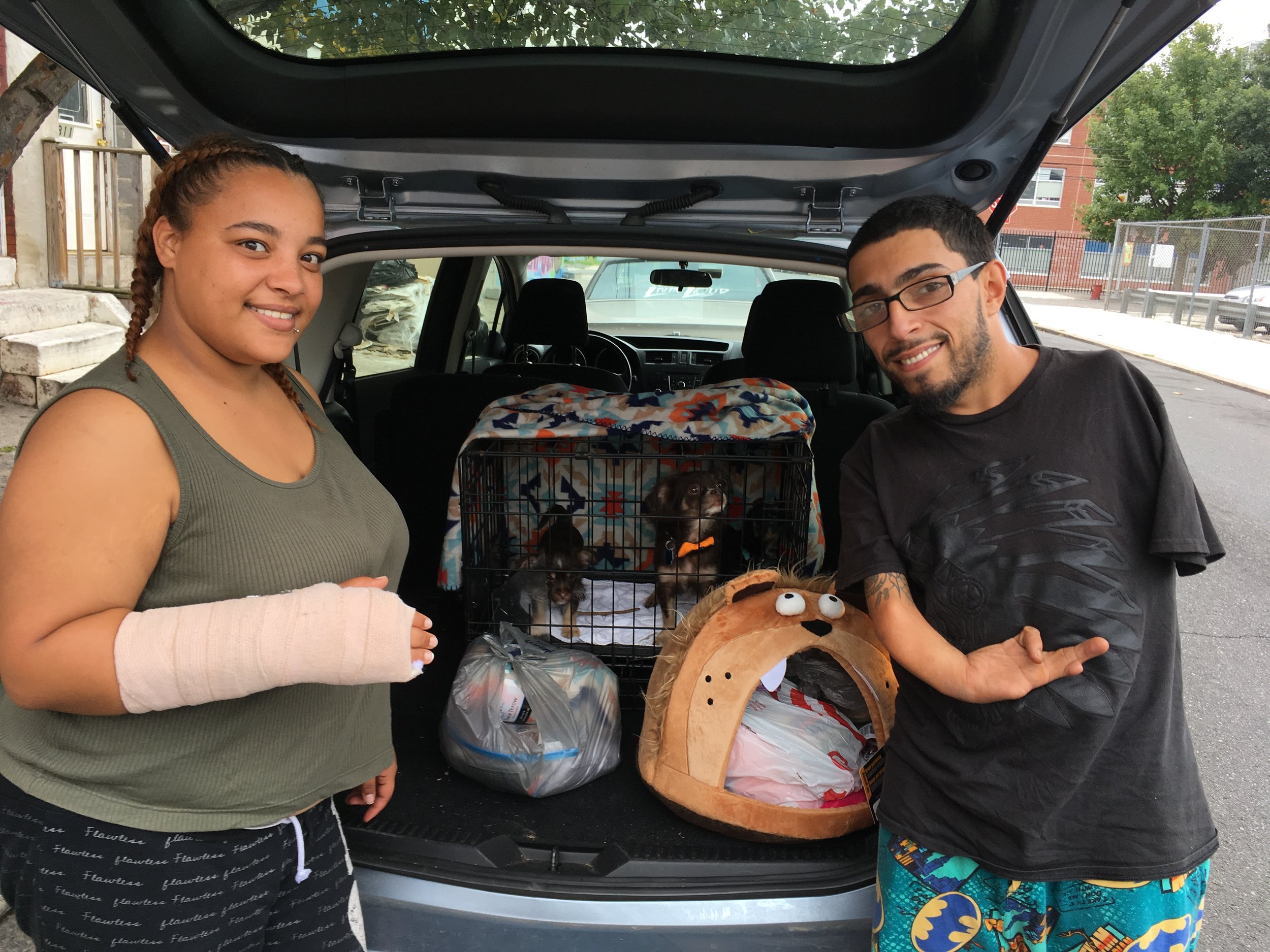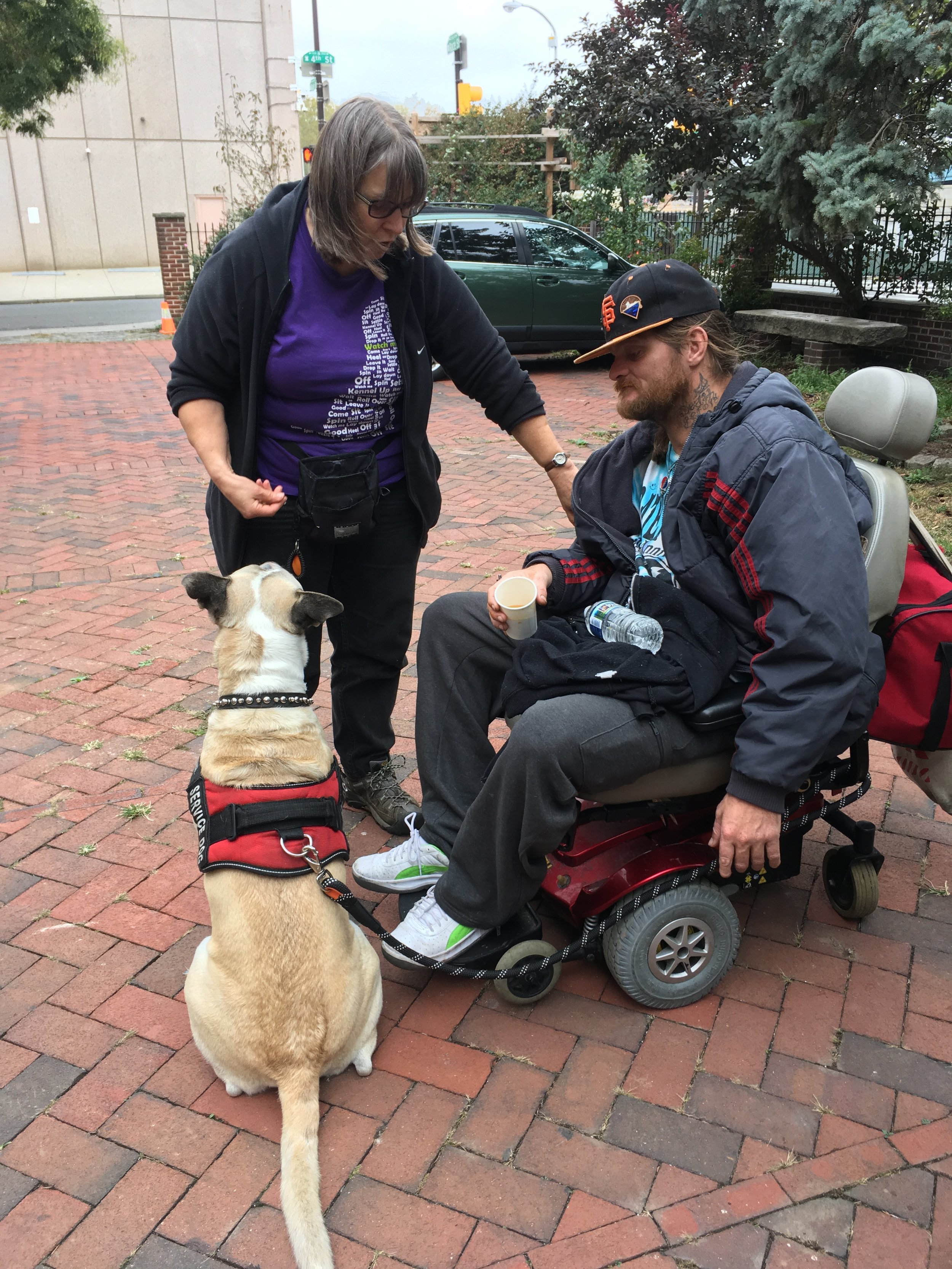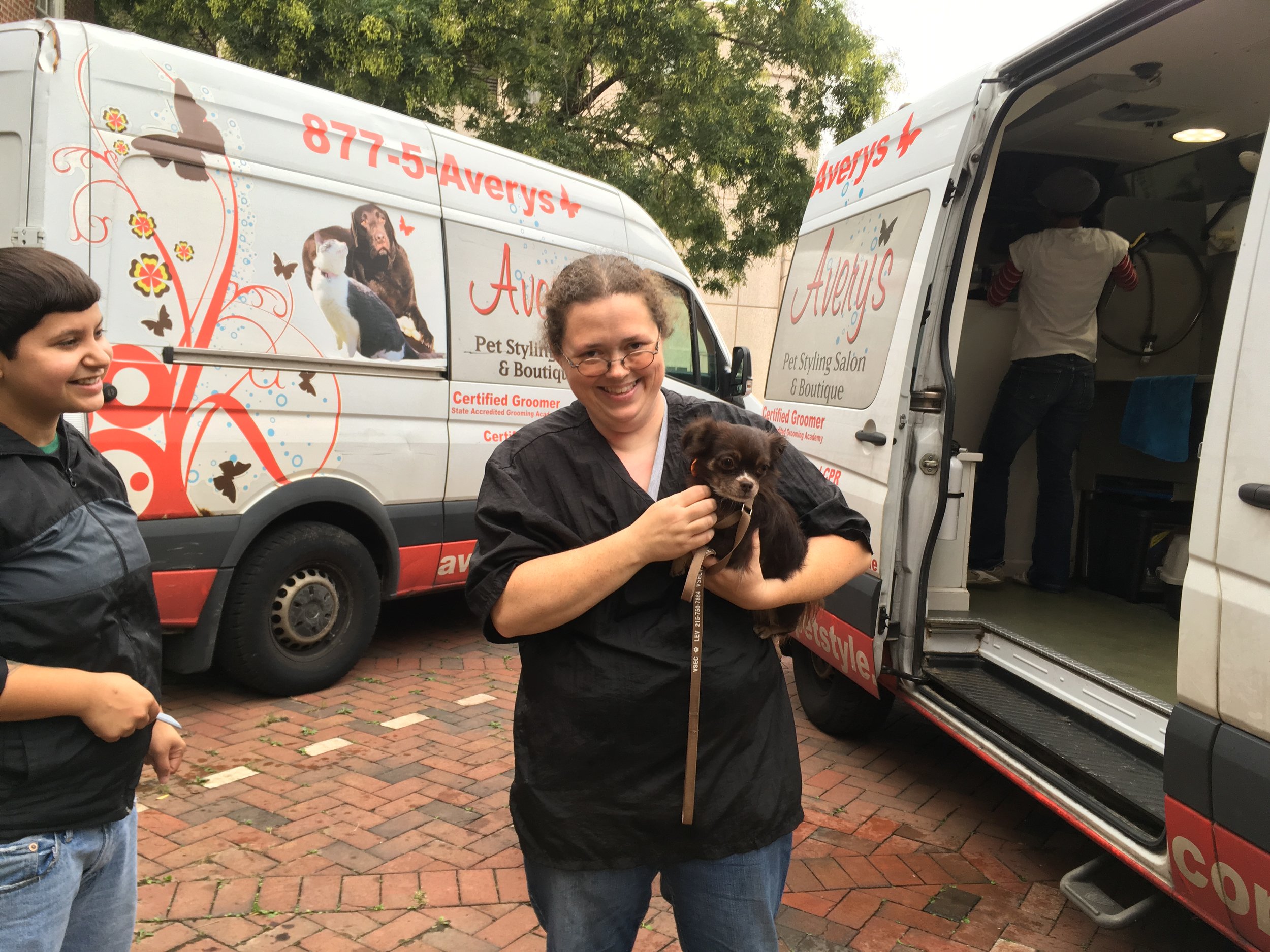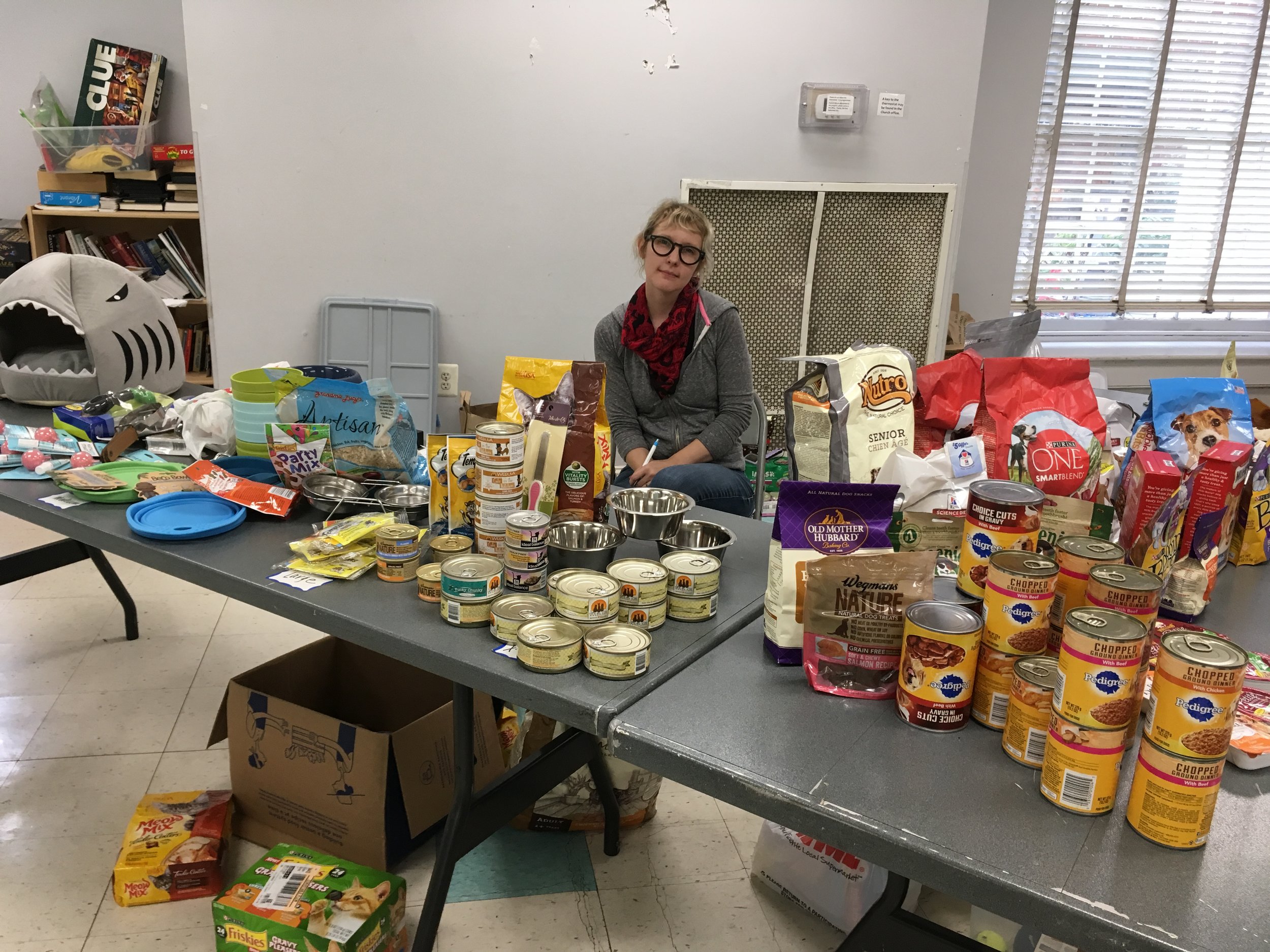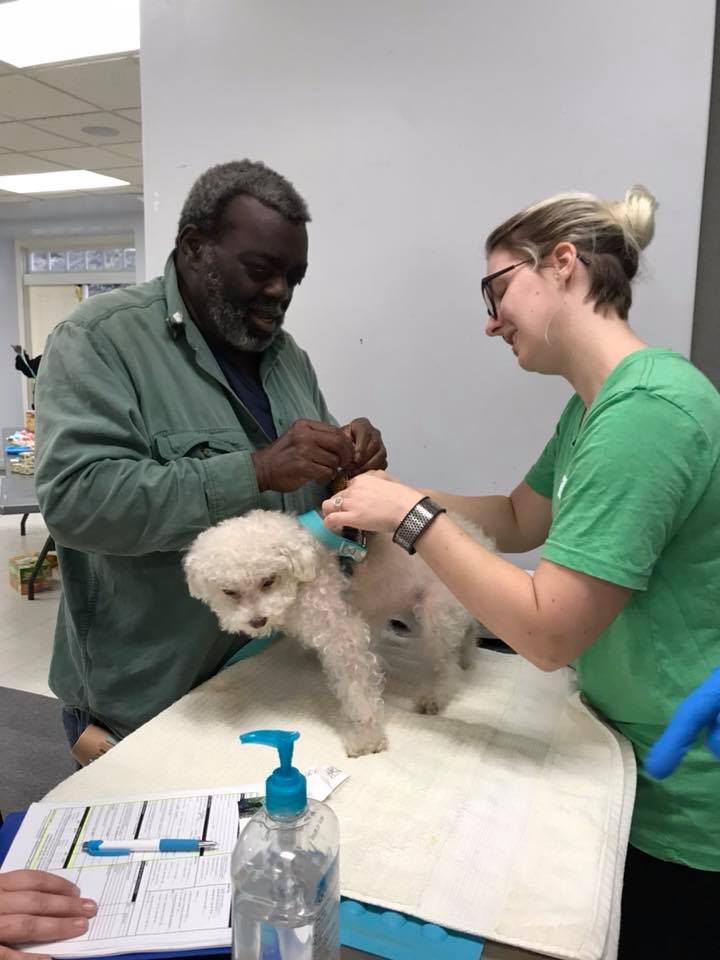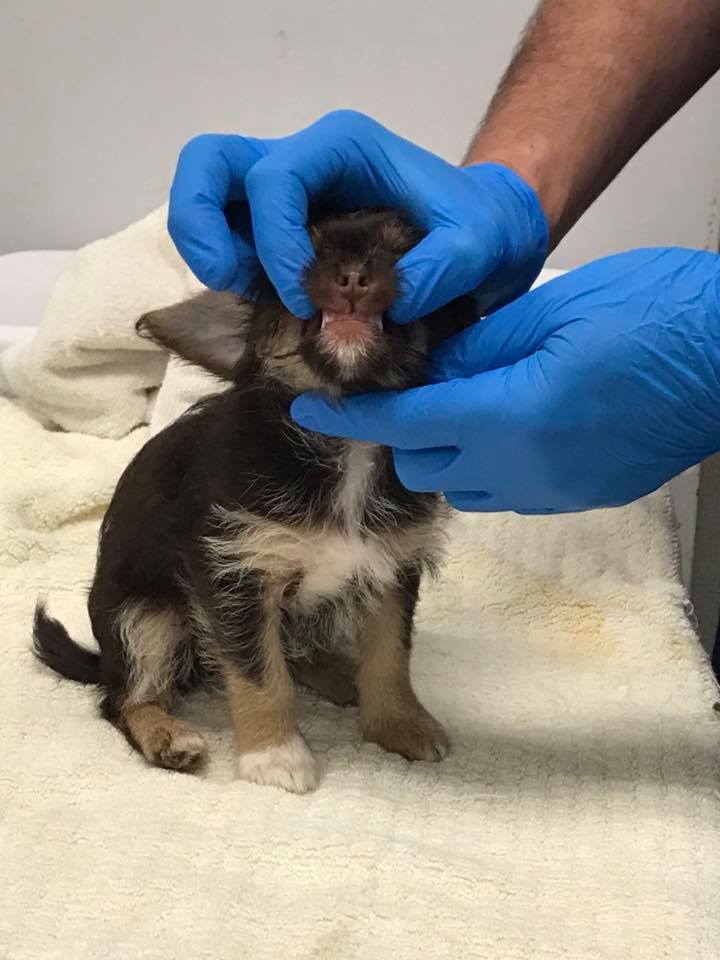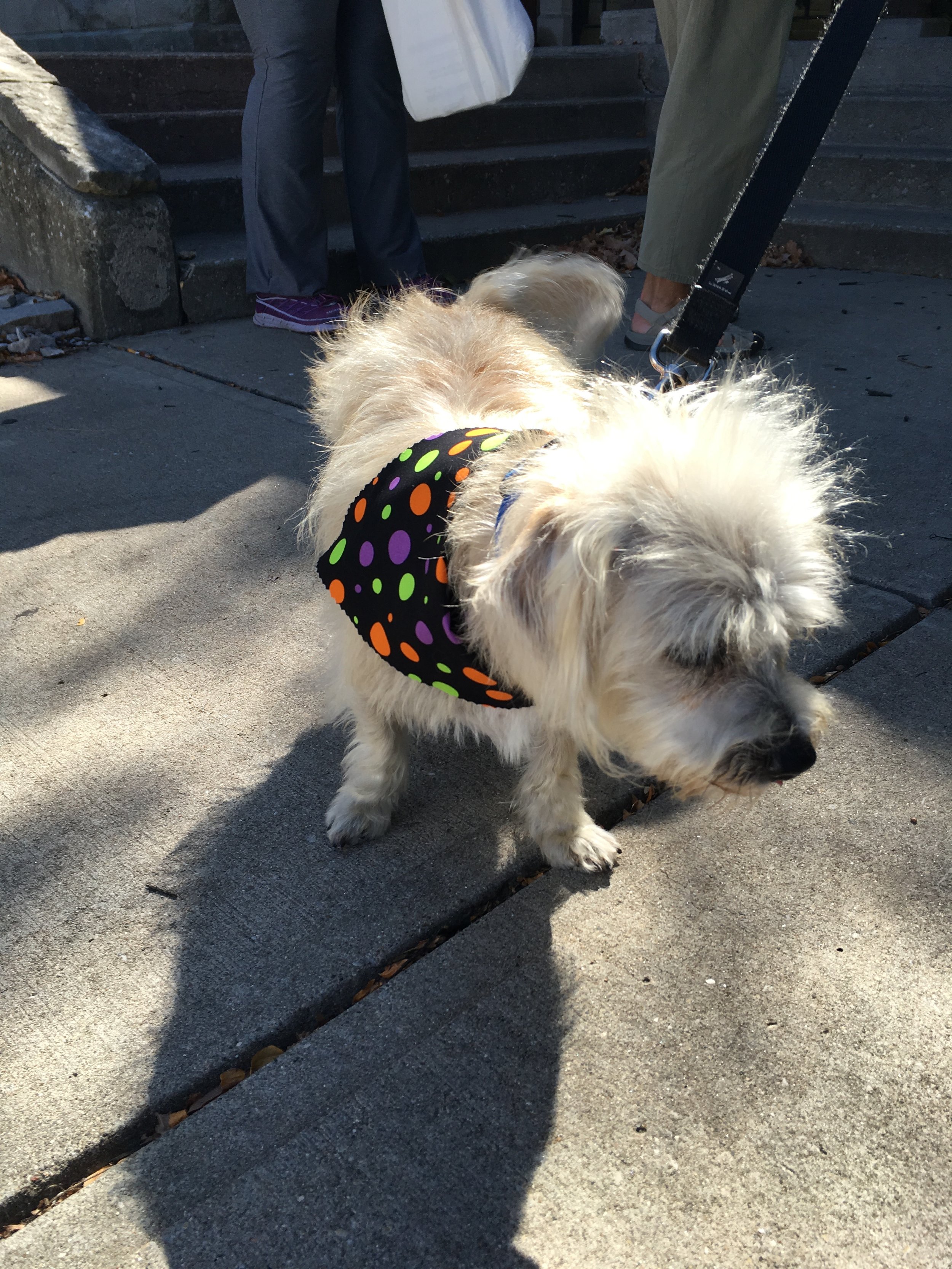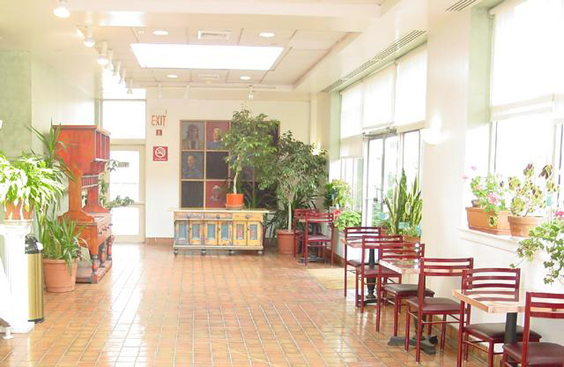
Co-Sheltering Collaborative: Inspiring Change in Homeless Services
By Dana Teel, MDIMH intern
For communities wishing to provide equitable access to homes to all people and families in need, it is necessary to expand temporary shelter accommodations for the furry, feathered, and scaled friends that may accompany people experiencing homelessness. But how is this accomplished with maximum impact and minimal risk? Surely adding animals to a human shelter environment will be chaotic and even risky. Perhaps. But the reward of keeping people with their animals when they are needed the most is worth facing the challenge. For some, a companion animal might be their sole source of support, comfort, or purpose, and the value of this should not be overlooked.
A shelter resident and his dog inside one of Philadelphia's rare pet-friendly shelters.
By Dana Teel, MDIMH intern
For communities wishing to provide equitable access to homes to all people and families in need, it is necessary to expand temporary shelter accommodations for the furry, feathered, and scaled friends that may accompany people experiencing homelessness. But how is this accomplished with maximum impact and minimal risk? Surely adding animals to a human shelter environment will be chaotic and even risky. Perhaps. But the reward of keeping people with their animals when they are needed the most is worth facing the challenge. For some, a companion animal might be their sole source of support, comfort, or purpose, and the value of this should not be overlooked.
The questions of “how is this accomplished?” still lingers, and it is one that My Dog is My Home (MDIMH) hopes to answer with the help of innovative programs that are currently applying some form of co-sheltering. One such organization in Philadelphia, PA is demonstrating a response to this important need. Now in its third year of offering a small pet-friendly winter respite, this program is hopefully just the beginning of what is to become a common practice across the city and beyond. With programs such as the one in Philadelphia, MDIMH will work towards creating a set of best practices for the field of co-sheltering people and animals together in homeless shelters.
As more communities across the country develop this interest in re-examining what is considered standard, important discussions and meaningful change won’t be far behind. The “Co-Sheltering Collaborative” is being developed by MDIMH to serve as an effective and purposeful professional-level network of homeless service providers and government organizations – enabling them to inspire, inform, and influence each other and programs across the country.
Throughout the course of their membership, organizations will be actively involved in receiving as well as contributing to the Collaborative’s resources and communications. By sharing practices and engaging in discussion, members also contribute to the evolution of existing co-sheltering programs. Members are expected to conduct thorough needs assessments, proper and judicious implementation, and ongoing evaluation in order to add to evidence of their programs’ strengths and weaknesses.
Navigating these processes can be very complex, and great benefit can be had from membership in the Co-Sheltering Collaborative in the form of feedback and guidance tailored to meet individual programs’ needs. The wealth of information gathered through the growth and evaluation of these individual programs will be invaluable for developing standardized co-sheltering best practice, as well as for generating opportunities and avenues for research endeavors for this generally underrepresented subject in academic literature.
Sacramento's pet-friendly winter shelter is a success, with some complications to learn from
Sacramento's first low-barrier winter shelter (one that accepts the "3 P's" - partners, pets, and possessions) is proving to be quite successful at getting people out of the streets and encampments in the winter. However, that does not mean they did not experience their fair share of challenges.
“It’s not perfect, but it’s working,” Jaycob Bytel, spokesperson for Mayor Darrell Steinberg, said of the city’s approach to sheltering homeless people this winter. “Allowing pets to stay with their owners has been a critical part of getting chronically homeless people to come in, which is exactly what we had hoped to do.”
Joey Mandel’s dog Austin Puppers is among the 100 dogs and eight cats that have come out of the cold with their owners since the city’s winter triage homeless shelter opened in early December. Hector Amezcua hamezcua@sacbee.com
Sacramento's first low-barrier winter shelter (one that accepts the "3 P's" - partners, pets, and possessions) is proving to be quite successful at getting people out of the streets and encampments in the winter. However, that does not mean they did not experience their fair share of challenges.
“It’s not perfect, but it’s working,” Jaycob Bytel, spokesperson for Mayor Darrell Steinberg, said of the city’s approach to sheltering homeless people this winter. “Allowing pets to stay with their owners has been a critical part of getting chronically homeless people to come in, which is exactly what we had hoped to do.”
By opening their doors to people and their animals in December, the Volunteers of America operated shelter has welcomed more than 100 dogs and eight cats. With this staggering number of human-animal families served in such a short period of time, it is clear that the shelter is filling a huge void in social services and need within the homeless community.
Part of the model's success is not only allowing animals, but allowing people to sleep with their animals. Up until recently, the more conventional approach to co-sheltering was kenneling animals in a separate space to reduce risk of incidence. Initially, VOA staffers planned to follow this model. “But we quickly realized that wasn’t going to work,” said the agency’s Christie Holderegger. “These animals are support and comfort for our guests. They wanted to be with their pets.”
Bringing animals into a shelter space, however, does create a more complex environment. According to records, two dog bites occurred at the shelter and a third happened off site. All the bites were to people.
When interviewed about these incidents, Jace Huggins - chief animal control officer for the city - does not consider the number of bites involving the winter shelter’s canine residents to be excessive. The three incidents, he said, account for a small percentage of all dog bites investigated by his agency since the shelter opened.
“Some of these dogs were being raised in very tumultuous environments,” outdoors at homeless encampments, said a city animal shelter manager Gina Knepp. “They are very protective of their owners, some of whom are struggling with mental health issues, substance abuse and other problems. Given all of those things, I’m surprised that it has gone so well and we haven’t seen more chaos.”
Dog bites and other animal behavior issues are a risk the shelter took when they opened, but overall they find the risk and its consequences worth the outcome - which is a vastly reduced street homeless population in the winter.
The shelter was scheduled to only stay open until March 31st, but officials are discussing keeping it open beyond that date.
NYC HOPE and Shadow Count 2018
Every year, My Dog is My Home team members participate in the NYC HOPE Count and Shadow Count. The Shadow and HOPE Counts are occurring simultaneously, so read about each one and choose the operation you'd like to join us in this year!
Every year, My Dog is My Home team members participate in the NYC HOPE Count and Shadow Count. The Shadow and HOPE Counts are occurring simultaneously, so read about each one and choose the operation you'd like to join us in this year!
HOPE Count:
On Monday, January 22nd, 2018, Department of Homeless Services will conduct its annual Homeless Outreach Population Estimate (HOPE), a citywide community volunteer effort to count every New Yorker sleeping on the street across the five boroughs during the coldest time of the year. HOPE relies on thousands of volunteers, and we are asking you to sign up to make this large-scale canvass a reality!
http://www1.nyc.gov/site/dhs/outreach/hope.page
Shadow Count:
On that same night, paid “decoys” will be planted in designated locations throughout the city. Information on the number of decoys that are counted by DHS volunteers will be used to assess the accuracy of the official DHS HOPE Count 2018. Shadow Count is funded by DHS but conducted independently by Silberman School of Social Work at Hunter College.
http://sssw.hunter.cuny.edu/shadowcount2018/
Volunteer for Your Community PIT Count
Want to contribute to change for people experiencing homelessness? Volunteer for your local point-in-time (PIT) count to help estimate how many people are experiencing homelessness in your community. All PIT counts occur within the last ten days of January.
Want to contribute to change for people experiencing homelessness? Volunteer for your local point-in-time (PIT) count to help estimate how many people are experiencing homelessness in your community. All PIT counts occur within the last ten days of January.
Although most communities' PIT count surveys do not include questions about animal companionship, many surveys do have a space for more descriptive comments or other notes. As a volunteer, if you come across a person experiencing homelessness with an animal, write it into the notes and put it on the radar of your local homeless service agency!
Below, we have included the information for communities conducting the PIT count in previous or current My Dog is My Home project locations, as well as Indianapolis - the first city to include "pet owner" as a subpopulation on their survey. Each city that includes animals on their PIT count survey is noted with a *. If your community is not listed below, look up the local agency which oversees homeless services in your city.
Meeting with NYC Mayor Bill de Blasio at the Queens District 30 Town Hall
Social Work / Community Organizing intern Tiffany Noboa meets with the mayor to discuss the lack of co-sheltering options for people experieincing homelessness with animals in NYC.
My Dog is My Home brought the issue of co-sheltering to the attention of politicians and bureaucrats at the December town hall meeting for Queens District 30. What became abundantly clear to us was that co-sheltering was not a topic often (or perhaps ever!) thought of by our elected officials within the realm of homeless services. Help us bring it up often by joining us at future town hall meetings. Email community organizing intern Tiffany Noboato get involved.
A Year in Review
2017 was a tremendous year for My Dog is My Home. Scroll through our gallery to revisit just a few of our favorite moments from last year.
From top to bottom, left to right: Toledo Service Fair (photo credit: Toledo Blade), Bloomington exhibition and presentation on service fair data, Asheville pop-up exhibition and presentation at Firestorm Books & Coffee, Bloomington Service Fair #2, Toledo Social Work continuing education event with special guest Diann Wears (photo credit: Toledo Blade), Video: Advocacy Research Symposium at College of Mount Saint Vincent, Philadelphia Service Fair and Blessing of the Animals, annual meeting at Woodstock Farm Sanctuary, starting line at the 1st Annual Tofurky Trot to benefit My Dog is My Home, LAHSA/My Dog is My Home webinar for new co-shelter providers in Los Angeles, founder Christine Kim speaks with mayor Bill de Blasio about co-sheltering options in NYC at a town hall meeting.
Thanks for Joining Us at Vegan Drinks BK!
Thank you to U.S. Veg Corp and NYC Vegetarian Food Festival for inviting us to last night's #VeganDrinksBK as a nonprofit partner. We also thank everyone who stopped by our table to chat! We had a great time connecting with fellow animal lovers at Reclamation to talk about the power of the human-animal bond in circumstances of homelessness. Stay in touch! Sign up for our newsletter!
Join us at Vegan Drinks Brooklyn featuring Chef Rootsie
My Dog is My Home is thrilled to be the nonprofit partner for this month's Vegan Drinks Brooklyn at Reclamation Bar. Enjoy a cocktail and come meet us in person!
Facebook event page
Food vendor for the night: Veggie Grub
Date & Time: Thursday, January 11 - 8pm to 10pm
Location: Reclamation Bar (817 Metropolitan Avenue, Brooklyn, NY 11211)
Vegan Drinks Brooklyn follows the national Vegan Drinks model of being a free monthly social networking event for people interested in promoting veganism and advocating for animal rights.
On all social media platforms, use #VeganDrinksBK when you post a photo of you and your new veg-friends at the event!
The event is free to attend.
My Dog is My Home is Now a Beneficiary of Rescue Chocolate!
Right in time for the holidays, we are now a beneficiary of Rescue Chocolate (completely vegan)! Rescue Chocolate is “the sweetest way to save a life!” From each chocolate purchased, 100% of the net profits are donated to animal rescue organizations around the country.
Supporters may now order Rescue Chocolate online and type "My Dog is My Home" into the Gift Note field on the cart before checkout. Rescue Chocolate gives us $1 on every item ordered (excluding mini bars). So make sure you put in an order this holiday - these bars make excellent stocking stuffers!
The Prevalence of Cats Among Philadelphia's Homeless Population
Cats of a My Dog First client.
Since our October service fair in Philadelphia, Misfit Manor's "My Dog First" program, which provides veterinary care and supplies to companion animals of people experiencing homelessness, has seen a surge in clients. Surprisingly, many of these clients have been cats!
Our experiences in other cities led us to believe that people experiencing homelessness are much more likely to have dogs than any other kind of animal. During our service fairs across the county, the vast majority of attendees brought dogs, including in Philadelphia. However, the sample size in Philadelphia was small and made it difficult to draw any demographic conclusions.
After the Philadelphia service fair, the My Dog First program was widely promoted and brought many new clients to Misfit Manor's doors - specifically, four single men experiencing homelessness with cats, and a woman with three cats. Moreover, during outreach for the service fair, My Dog is My Home founder Christine Kim received a tip from a community member who stated that he often sees people he believes to be homeless with cats riding the trains in the Northeast section of the city.
We have yet to understand how this surprising trend will impact Misfit Manor's services or our approach to developing co-sheltering options in Philadelphia. Do you have ideas about how we should engage this population differently? What special challenges are there to experiencing homelessness with a cat, as opposed to a dog? Send your responses to My Dog is My Home founder, Christine Kim (christine@mydogismyhome.org), to be featured in our next newsletter.
News Brief: Rising Rents, Rising Homelessness - 2017 Annual Homeless Assessment Report Finds Increase in Homelessness Concentrated in High-Cost Cities
For the first time in seven years, homelessness has increased in the United States. According to the 2017 Annual Homeless Assessment Report (AHAR) to Congress, the increase was driven mostly by the numbers of unsheltered individuals in the 50 largest cities.
“The commonality in [these places] are rapidly rising rents, with not rapidly rising incomes. This is causing the displacement of a significant number of people,” said Housing and Urban Development (HUD) Secretary Ben Carson during a press call on Wednesday. Matthew Doherty, executive director of the U.S. Interagency Council on Homelessness, agreed. “High cost and low vacancy rates are putting more people at risk of entering homelessness, and they’re making it harder and harder for people to find housing as they strive to exit homelessness.”
The Trump administration's proposed budget for 2018 slashes HUD spending by more than $6 billion, eliminating housing aid for millions, including rental housing vouchers for more than 250,000 households. As Kriston Capps reported, “relative to funding levels necessary for HUD in fiscal year 2017, the cuts amount to a 15 percent reduction—the largest cuts in housing aid since the Reagan administration.”
According to Gary Blasi, a professor of law emeritus at UCLA and an expert in homelessness, there is still hope for people experiencing homelessness. One of the nation's homeless capitols is making an effort to effectively prevent and end this crisis.
"Well, [Los Angeles is] doing a few things right. One is that the voters have done everything they could do. They passed by 75 percent a bond that will raise about $1.2 billion over 10 years to build supportive housing. The county voters have approved a sales tax increase that will add about 350 million a year for various kinds of services...[but] we know exactly what we need to do in order to end homelessness in Los Angeles. It's a question primarily of political will and leadership and a recognition that we have underspent on this part of our society for a very long time and it will take some considerable resources to get back to where we even were 30 years ago."
Click the images below to scroll through a few key findings from the 2017 AHAR:
My Dog is My Home's Annual Meeting at Woodstock Farm Sanctuary
My Dog is My Home celebrated its past year of operations and accomplishments during a bi-coastal annual meeting. The New York team took the opportunity to retreat to the beautiful Woodstock Farm Sanctuary (WFS) to reflect on its work and the human-animal bond.
WFS's mission is to rescue farmed animals and give them care and sanctuary, connect animals with people to advance veganism, and advocate for animal rights in alliance with other social justice movements. At first glance, My Dog is My Home’s mission may seem afield from WFS’s. But our two organizations actually share a foundational quality - WFS works to provide sanctuary for animals and to give them a new lease on life, as do we. In our work, home is a sanctuary for both human and non-human animals alike, as well as those who come in human-animal pairs.. Also, we believe that all social justice missions are connected. The struggle for a more kind, compassionate, and just world includes the intersecting interests of both people and animals.
We thank our host for providing the perfect setting for a review of our year!
Recap: Philadelphia Service Fair and Blessing of the Animals
"They're a part of my family. They go where I go."
- Mohammed
We thank our generous and dedicated partners in the City of Brotherly Love for their participation in the Philadelphia Service Fair and Blessing of the Animals. With Misfit Manor, West Chester University, Emancipet, Bad Dog Good Dog, Avery's Pet Styling Salon and Boutique, and Old First Church, we were able to serve 7 animals and their human caretakers and prepare them for the winter ahead. The dogs walked away fully vaccinated, bathed, and stocked up on cold-weather sweaters. Unfortunately, we know that their human caregivers face more difficult challenges that we cannot address in a 1-day service fair. So for us, the service fair is not an end in itself - it is just the first step in addressing the shelter and housing needs of people experiencing homelessness with animals.
Through the relationships forged with local partners and our new and improved understanding of human service providers in Philadelphia, we hope to identify and work with one of the area's overnight winter shelters for a "soft launch" of a pet-friendly space. Please check our Philadelphia project page for future updates.
Photo credits: My Dog is My Home, Jaime Morgan (Misfit Manor), and Emancipet Philadelphia.
Recap: Homelessness and Animal Companionship in Toledo and Nationally
Photo Credit: Jetta Fraser for The Toledo Blade
Diann Wears, the face of homelessness and animal companionship in Toledo, attended My Dog is My Home's social work continuing education event "Homelessness and Animal Companionship in Toledo and Nationally" to show her support of our efforts. It has been a little over one year since Diann and her dog Cow were taken off the streets and housed together, with much support and involvement from the local community. Diann noted that her case was particularly visible because she didn't hide, and she slept right downtown near the Greyhound Bus station. Others may not be as visible.
As showcased by the data collected by My Dog is My Home and the University of Toledo during the February 2017 service fair for companion animals of the homeless, people and families who are experiencing homelessness with animals may be doubled up or couch surfing rather than street homeless. They may also be an invisible population to local social service providers because of a "foreclosure mindset" - homeless human-animal families rightly assume that they will be denied access to services because of their animal, so they avoid engaging homeless services altogether.
Other data collected from the service fair was also reviewed at the continuing education event, in addition to different trends and service models from around the country.
Recap: Bloomington Service Fair 2017
We thank our partners in Bloomington, IN for a wonderful second service fair. We served five dogs from four households during service fair #2, which is less than half the number we served last year. Our lower attendance rate is attributed to the regular care our Bloomington partners, Furever Family Inc and Monroe County Humane Association, have been providing all year since service fair #1 in 2016. Due to their diligence and the development of a local safety net, My Dog is My Home is unlikely to return for a service fair #3. My Dog is My Home's goal is not to have a long-term presence in the communities in which we work. Rather, we mobilize when and where we are needed.
Thank you to Furever Family, Monroe County Humane Association, Trinity Episcopal Church, and Wash & Wag Mobile Pet Grooming for your partnership. We cannot wait to see what wonderful things you will continue to do for your community.
Philadelphia Blessing of the Animals and Service Fair
The Philadelphia, PA service fair is a multi-agency event which is being organized to provide free vaccines, animal care supplies, and grooming to the companion animals of the homeless. Animal guardians will also have the opportunity to pick up human clothing, hygiene kits, and social service referrals.
Date: Sunday, October 15, 2017
Location: Old First Reformed Church - 151 N. 4th Street (@ Race Street), Philadelphia, PA 19106
Blessing of the Animals Service: 11 AM - 12 PM
Service Fair: 12:15 PM - 3 PM
For more information, please visit our Philadelphia, PA project page.
1st Annual NYC Tofurky Trot Benefiting My Dog is My Home
The Tofurky Company & My Dog is My Home invite you to join us for a Tofurky Trot 5k in NYC, NY this November 19th, 2017.
Tofurky Trots are designed to support both the health and vitality of local communities and raise money for local non-profits supporting a compassionate lifestyle. The Trot is 5k (3.1 miles) and is a run, trot, or walk - open to all levels of physical fitness. It’s a great day to enjoy the company of fellow animal lovers and highlight the benefits of plant-based diets around this largely carnivorous holiday.
This Trot is running to support My Dog is My Home. Your registration includes an organic cotton Tofurky Trot t-shirt.
DATE AND TIME
Sun, November 19, 2017
8:00 AM – 11:30 AM EST
LOCATION
Randall's Island Park
1 Randall's Island (starting point: between the flag poles near the Golf Center)
New York, NY 10035
Register TODAY!
Counting People Experiencing Homelessness with Animals: Using the PIT Count and HMIS as Tools
The HUD required Point-In-Time Count occurs at least once every other year in an effort to enumerate individuals and households experiencing homelessness. Photo Credit: From the archived Medium account of Julián Castro - the former 16th U.S. Secretary of Housing and Urban Development.
The simplest and perhaps most difficult question that plagues advocates of people experiencing homeless with animals is “How big is the population?” An estimate given by Pets of the Homeless, a national organization dedicated to feeding and providing veterinary care to companion animals of the homeless, is 5-10%, and up to 24% in certain areas of the country (Pets of the Homeless, n.d.). Our direct experience and observation generally puts My Dog is My Home in agreement with this estimate. However, we also caution and admit that there is little quantitative research which can support our claim. A rigorous method for counting this population is sorely needed in our field. Accurately gaging how many people experiencing homelessness are caring for animals creates a basis for proving and quantifying need - in other words, understanding the scope of the problem helps us inquire where, how much, and why our resources should be allocated to serving this population.
The recent uptick in interest in counting people who are homeless with animals has manifested in certain communities' Point-In-Time (PIT) Counts. PIT Counts are required by the US Department of Housing and Urban Development and are designed to enumerate homeless individuals. In 2016, Coalition for Homelessness Intervention and Prevention (CHIP), the Continuum of Care (CoC) to cover Indianapolis, IN, was the first known CoC to ask a question about pet ownership to all unsheltered individuals surveyed during their annual count. Since then, both the Los Angeles Homeless Services Authority (LAHSA) and the Toledo-Lucas County Homelessness Board (TLCHB) have also included a question about animal caretaking in their surveys.
In 2016, CHIP counted ten homeless households with a total of twenty-two companion animals between them, which accounted for 7.7% of the unsheltered homeless households surveyed within the vicinity of Indianapolis (Indiana University Public Policy Institute, 2016). In this year's count results, CHIP reported an increase to nineteen homeless households who are caring for a total of twenty-eight animals, constituting 15% of the homeless households surveyed (personal communication, June 7, 2017).
TLCHB reported lower numbers of homeless animal guardians, counting only one unsheltered household caring for an animal in the Toledo-Lucas County area (personal communication, February 14, 2017). However, this is a deceptively low result from the count. There were ten households with animals who attended a service fair for companion animals of the homeless, although none of the households fit the PIT Count outreach/engagement criteria - the households were neither street homeless nor utilizing a shelter program.
The numbers for Los Angeles’ 2017 count have yet to be released.
The buy-in already attained from these three large CoCs is a victory for advocates of people experiencing homelessness with animals. The PIT Count, however, only provides us with a starting point on which to continue our assessment of need; it is a convenient way to take a snapshot of homelessness and animal companionship, but that is wherein the limitation resides. It is simply a snapshot which relies on how many individuals are engaged by volunteers on a single date at the coldest time of the year.
PIT Count estimates are often criticized for being an under-representation of homelessness, as the count of unsheltered individuals are designed to capture those who are street-dwelling. This can exclude those who are hiding in hard-to-survey places such as ATM vestibules, 24 hour restaurants, abandoned buildings, or underground tunnels. But there are few other reliable methods for estimating population size. Difficulty with counting can be attributed to unclear definitions of homelessness, transience, and the cyclical nature of homelessness (Institute of Medicine, 1988).
However, after decades of developing and redeveloping strategies, researchers have come to a consensus that “service-based methods” produce the most accurate enumeration of homeless individuals. Service-based methods refer to survey techniques that sample from or count people who are homeless in a variety of service system locations, such as shelters, soup kitchens, and day programs (Peressini, McDonald, & Hulchanski, 2009).
In one study, researchers employed a service-based method to specifically study the population of people experiencing homelessness who were caring for animals in Knoxville, TN (Cronley, Strand, Patterson, & Gwaltney, 2009). They achieved this through their use of Homeless Management Information Systems (HMIS), an electronic database meant to facilitate the collection of accurate and streamlined data and the coordination of services among homeless service providers. Since the enactment of the HEARTH Act in 2009, all communities are now required operate and consistently participate in an HMIS (US Department of Housing and Urban Development [HUD], 2009). While using HMIS to quantify homelessness and animal companionship may provide a more accurate number, it may still provide an under-representation of homeless animal guardians due to its inability to capture information on individuals who do not engage with service providers.
For example, researchers in Toledo, OH who interviewed human attendees of a service fair for companion animals of the homeless found that some participants had foreclosed on the idea of accessing services due to an anticipation that their pets would not be welcomed (Tscherne, Kim, & Hoy, 2017). Thus, the interview participants and the uncounted number of human-animal families like them are invisible to HMIS and to the homeless service system in general.
The study from Knoxville which used HMIS reported that 5.5% of the sampled individuals were caring for an animal. The study also found certain common qualities among people experiencing homelessness who were caring for an animal, characterizing this population in Knoxville as more likely to be female, Euro-American, married, experiencing homelessness for the first time, and possibly being homeless due to domestic violence. Chronically homeless individuals were the second most likely type of person to be caring for an animal. The study suggests that in light of this information, organizations serving the homeless should have intake questions which inquire about animal companionship if clients present any of the identified characteristics which make them more likely to be an animal guardian (Cronley et al., 2009).
The same study explores the significance of the population size. While 5.5% may seem like a small percentage, it does indicate that clinicians and other social service workers in the field of homelessness will encounter clients with animals at some point in their practice (Cronley et al., 2009). What’s more, therapists, substance use counselors, and others who specialize in certain areas who are working with homeless clients with companion animals may find their work on hold for longer, as their clients face additional barriers to eating, protecting themselves from the elements, and having a safe place to sleep.
Year round, we advocate for better quantification of homelessness and animal companionship through HMIS - the most accurate way we know how to collect numbers on this population. But especially in the winter, we ask providers and the public to push for an accessible way to count people experiencing homelessness with animals - the PIT Count. The PIT Count is an existing tool than needs only one question to be added in order to begin collecting the data needed to better understand this issue. And the process of collecting such crucial data can come in the simple shape of a single check-box.
Breaking Ground, Breaking Barriers - An interview about housing human-animal families with Shana Wertheimer, Assistant VP of Housing at Breaking Ground
Breaking Ground is known for doing things differently. Most often, they are lauded for being New York City's largest provider of supportive housing* and a pioneer of "Housing First" - a model based on the premise that to end homelessness, we must first and foremost provide homes. But a little known fact about Breaking Ground is that they also have a very different model for allowing animals in their facilities. Since the very outset of their supportive housing operations, Breaking Ground has allowed pets on premises - a number of their buildings are pet-friendly.
At the time of their founding, allowing pets was simply a way for Breaking Ground to grandfather in the lifestyles of those who were already living in their Times Square apartment complex, a former grand hotel that the organization acquired and renovated in 1990. Over the years, this original “pets welcome” policy at the Times Square residence has evolved. Although it was never Breaking Ground’s intention to target this specific subpopulation of the homeless, Breaking Ground eventually realized that welcoming pets can even help break down barriers to housing for people experiencing homelessness with animals.
It is very important to distinguish "pets" from "emotional support animals" and "service animals" in this context, because while all housing providers are required to accept emotional support animals and service animals under the Fair Housing Act and Americans with Disabilities Act, most housing providers that serve the homeless do not allow pets. This is where Breaking Ground is unique and an example of a high-volume homeless service provider who has a history of taking the human-animal bond into account.
However, the implementation of a pet friendly policy has not always been smooth. In the hopes of beginning a national conversation on effective practices in shelter and housing programs for people who are homeless with pets, My Dog is My Home’s founder and executive director, Christine Kim, spoke with Breaking Ground's Assistant Vice President of Housing Operations and Programs, Shana Wertheimer, about their experiences. Read the interview between Christine and Shana for an insider view on the successes and challenges Breaking Ground has had with accommodating pets on-site.
*Supportive housing is a combination of affordable housing and support services. Programs are designed to help individuals and families to use housing as a platform for health and recovery following a period of homelessness, hospitalization or incarceration. Supportive housing may also be applied to youth aging out of foster care.
Christine Kim, My Dog is My Home (CK): Thank you for meeting with me, Shana. This is such a wonderful opportunity to understand a different kind of model that allows people with pets to be together without going through the emotional support animal process.
Shana Wertheimer, Breaking Ground (SW): You're welcome, Christine. It's my pleasure. It's interesting that this is such a big topic, because Breaking Ground has always allowed pets in certain buildings.
Breaking Ground started with the Times Square residence a little over 25 years ago. It has 652 units and we have always allowed pets there. The Prince George was our second building. It has 416 units, and we have also always allowed pets there. However, not all of our buildings are pet-friendly. Our third building was The Christopher. It's a renovation of the former McBurney YMCA and it's set up a little differently than our first two buildings. The rooms are about 250 square feet and it's the first of our buildings to have suites - each suite has 4 bedrooms, 2 bathrooms, and a common area. This was the first building in which we implemented a "no pets" rule to make it easier to manage. There were other buildings after that where we also had a "no pets" rule, and these are mostly buildings that have a suite floor plan.
The place where we started seeing a problem with pets in one of our "no pets" buildings was at The Lee, which is a building that we operate in partnership with The Door. A number of units there are home to young adults who have aged out of foster care. We began to have issues with tenants sneaking pets in, and we also had some trouble enforcing the "no pets" rule.
And then three years ago, we were taken to court by a tenant at The Friedman, which is another one of our "no pets" suite-style buildings with 2 to 4 bedrooms connected by a common area. In suites, the roommates participate in the interview process for new tenants. We denied the applicant's request for a reasonable accommodation for his emotional support animal because at that time, we did not have a set protocol for handling emotional support animals. The court sided with the tenant, and that prompted us to develop an official emotional support animal protocol.
CK: So how did you resolve the issue with the tenant in the "no pets allowed" building who went to court? The roommates obviously didn’t want an animal in their suite.
SW: The tenant still lives there with his dog. His roommate is very unhappy about it but refuses to move out and continues to live there. For example, she’ll say, “The dog is in the common area running around, and he is in his room with the door closed.” Or, “He lets the dog out on the balcony to go to the bathroom. That’s not allowed.”
CK: So the issue never resolved nicely.
SW: Right. Our hands are somewhat tied unless there is some clear lease violations or signs of neglect or something like that. So what we’ve explained is that she has to let us know immediately when it's happening, every time it happens. If it’s not happening regularly, there’s not really a lot we can do. The burden of proof is really on us, in the wake of the court decision. That’s where they stand right now. It’s complicated.
CK: I would imagine that because you have these pet friendly buildings, you actually get fewer emotional support animal requests than maybe some other places that have a "no pets allowed" rule across the board. Do you think that’s the case?
SW: In the building where we allow pets, absolutely. It’s the difference between doing paperwork and not. But the process really isn't that different. Everyone is required to register their animal with us by filling out a simple form, whether it's a pet or emotional support animal. If you have a pet and you fill out our registration paperwork, you don’t have to bring a letter from your doctor. It’s really the only difference. Legally, the threshold for who can certify that an individual needs a support animal is very low, and that can lead to difficult situations.
CK: Is proof of vaccines and spay or neuter part of the registration form?
SW: Actually, no. We are not legally allowed to ask for that. Maybe very specific types of vaccinations, but I think when we were negotiating our reasonable accommodation policy, we were told we couldn’t require it.
CK: In the pet friendly buildings, is there an approval process for animals?
SW: There are more stringent guidelines for pets than there are for emotional support animals. For pets there is a weight restriction and there are also restrictions on what types of the animals are allowed. There are certain rules about having one pet only, that tenants can’t bring their pets to building events, that the pet must be registered with Breaking Ground, and some breed restrictions. But that’s about it.
Some animals have been grandfathered in. Technically there is supposed to be one pet per unit. A few tenants have two. You know, at the end of the day, we always pause to ask ourselves if we are really going to take a tenant to housing court because they have two dogs. It’s a little about picking your battles. More often than not, if the tenant's animal is causing problems because they’re not well-trained, or they’re aggressive, or it’s going to the bathroom all over the place, then we have a problem. It doesn’t matter if it’s a little Chihuahua or a big Pit Bull. That is worth pursuing. As long as you’ve got your animals under control, your apartment is clean and in good condition, then it’s probably not worth our time to really pursue forcing you to part with it.
For emotional support animals, the thing we’re most interested in is an emergency contact, because we’ve had numerous occasions where someone goes to the hospital and there’s no one to take care of the animal. And the staff ends up having to do it.
CK: I'm sure there are some interesting boundary issues that arise from a situation like that.
SW: I wouldn’t even say it’s boundary issues. It’s more like, “This isn’t my job. I don’t want to have to walk this dog every day." Once, we had a woman who was hospitalized and we fed her cat for six weeks. We end up taking care of more cats than dogs for some reason. Staff feel like, “it’s not my job to do this.” And we end up having to pay for the food, and for litter and things like that. Honestly, sometimes it just depends on the staff. Some buildings are very pro-animal.
CK: It just depends on who you have on the team?
SW: Exactly. Both on the social service and the property management side. Everyone’s fine with it even though it can be an annoyance. But on the social service side, I feel like we have more opinionated debates.
CK: Do people know that there are certain pet-friendly buildings and there are non-pet friendly buildings?
SW: Yes.
CK: They do? It’s interesting because if the applicant has an animal and there’s a vacancy at a pet-friendly building, I would think they would rather go to the pet-friendly building than go through the emotional support animal process in suite building with a no-pets-allowed rule.
SW: Now that we have rolled out our policy for emotional support animals, people are more likely to take advantage of that. I think people are more interested in where they live and the size of their apartment than whether or not there is a "no pets" policy. Also, as I said before, getting an emotional support animal is not so hard. Most people in our buildings are eligible for an emotional support animal. So if we converted our buildings to allow pets, I doubt the number of animals is going to go up by much.
Our buildings are about 60% formerly homeless, and I would say that all 60% are probably eligible. Then of the 40% who are not formerly homeless, maybe half of them are eligible too. I feel like the people that are really going to have an animal and keep it, they have one already.
CK: About how often do you get residents with pets? How common are pets, as opposed to emotional support animals?
SW: I would have to run the numbers. But I would estimate somewhere around 5%.
CK: Ok. That’s interesting. That is pretty consistent with the existing research that’s out there - that it’s actually a small percentage of people who are experiencing homelessness with pets.
SW: I agree with that. Breaking Ground oversees the street outreach programs for Brooklyn, Queens, and about a third of Manhattan. So we work with a lot of people experiencing homelessness. I oversaw our Brooklyn outreach program for about three and a half years. Compared to the number of people we worked with overall, the number of people with pets was very small.
There were definitely times when people had animals, and we were therefore limited on where we could help them get housing. And that was maybe a time before support animals were a big topic of discussion.
We've also had clients where we felt that they were really not ready to have an animal. Another complicated story is about a guy who had an aggressive dog. He ended up having to put the dog down because it was biting people. So, you know, there’s more to the conversation than just how do we get housing for you and your animal? We also need to include questions in the conversation like, are you taking care of the animal properly? Is it actually providing you with support?
CK: That’s a great question. Is this animal actually providing you with support?
SW: When people are on fixed income, animals can be expensive at times. I’ve seen clients with animals that keep them pulled together because they’re providing routine, and there are many ways that they can be therapeutic. But I've also seen situations where an animal was a huge expense and took up so much of the client's time. They could have been focusing on getting sober or something else, but the pet ended up being a scapegoat for all their other issues. So it's difficult to generalize. Animals don't always have therapeutic effects on our homeless or formerly homeless clients' lives.
CK: You just mentioned some of the problems you’ve had with pets on site. Which do you feel are the most common?
SW: You name the problem, we’ve probably had it. But I feel like barking, animals making too much noise, and animals going to the bathroom in the hallway are the common problems. That’s mainly it.
CK: So the main problems are behaviors that affect the community - like messes in the common space and noise that may bother the neighbors.
SW: The noise comes to us more as a neighbor issue, usually when a tenant tells us, “I can’t sleep. The dog is barking all the time,” or something along those lines. The bathroom issue is more of a staff issue because we’re the ones who have to clean it up. And like I said before, that's not something we expect to be a part of our job descriptions.
Most of the people with animals are pretty good about being responsible for messes. But we have had to deal with a few occasions where someone who is really not capable of taking care of an animal has gotten one, or abuse of an animal on occasion.
CK: How do you deal with that? Do you get the ASPCA involved?
SW: Yes. We may have even called the police in that case. Ultimately, I think a staff member ended up taking the cat. That’s the other thing that happens. People get hospitalized, or people pass away, or they move, and they leave their cat. Or they go into hospice and they can’t care for it. Suddenly it falls on the building staff to figure out what to do. In some cases, the whole staff has animals because they’ve adopted animals from the building. Some of the buildings actually have basement cats because when a tenant left, they left their cat. Recently at The Lee, we had three cats we were trying to figure out what to do with. The no-kill shelter that I’m aware of is on the Upper West Side. That’s very far. It takes away from staff time. That part gets very complicated also because the staff don’t want to take an animal to the city shelter where the cat is at risk for euthanasia. On the other hand, we don’t have a ton of options. So that can be problematic.
CK: Are animals taken into account during service planning or in case management services?
SW: Yes, the resident services staff are definitely talking about it with people. For example, we had a tenant with an untrained puppy, and this is a tenant that has some developmental issues. He loved the dog, but it was trashing his apartment. The staff worked with him to try to figure out a plan. He was employed, so they even considered hiring a dog walker. And they explored free services too. They asked all the questions. “What’s inexpensive that we can help you get? What training services would be helpful?” Ultimately, the puppy won. It wore him down and he gave it to someone else. Each case is unique.
The social services staff wants to make sure that if a resident wants to have the animal or if they already have one, that they can successfully maintain it. One of the ways we ensure that is through an annual pet fair, which we have at all of the buildings with pets. Anyone who has a pet can bring it to the fair, where services are provided, such as vaccines, nail trims, grooming tips, and various handouts and supplies.
This is something Breaking Ground has always done. We understand that animals can be like someone's family, and we need to find ways to work with that in whatever way we can. If you're looking at a whole person, you need to take their social environment into account, and sometimes that includes a dog or a cat.
Our Feedback to the US Interagency Council on Homelessness on Their Federal Strategic Plan to Prevent and End Homelessness
Dear US Interagency Council on Homelessness,
Thank you for once again inviting the front lines of homeless services to give feedback on the federal strategic plan. Your commitment to incorporating our voices into your amendment process is commendable.
I am participating in your call for feedback because I see an opportunity to strengthen the plan's response to an often ignored subpopulation of the homeless - people and families experiencing homelessness with a companion animal. In my experience working with people who are homeless with animals, they express that they do not have an equal opportunity to access shelter and housing programs that may help end their state of homelessness.
The status quo in homeless shelters and housing programs across the country is "no pets allowed," forcing many people with companion animals to decide between surrendering their animals to get help or to stay homeless with their animals. This is not an ultimatum anyone should have to face. In many cases, dedicated animal guardians will forego social services to maintain the human-animal bond - a relationship that is often their main source of love and support, and one that both adds to and helps them cope with the stressors of homelessness.
To reiterate your own vision, "No one should experience homelessness. No one should be without a safe, stable place to call home." Every family, no matter what its composition, should have an opportunity to access the help they need to find a home. To this end, we hope that you will incorporate our suggestions to make homeless services accessible to people with animals. There are many ways in which this can be done in your existing plan:
First, Objective 1, which calls for collaborative leadership at all levels and across sectors, can include officials in Animal Control and other leaders in animal welfare. For example, the city of Los Angeles has put forward a plan to reduce homelessness which involves the collaboration of their Animal Control department. People who are at risk of homelessness with animals' first point of contact with a city service may not be a homeless service. Rather, it may be an animal shelter. Cross-training to promote screening for homelessness as a reason for animal surrender both helps distribute appropriate resources and keep preventable surrenders out of our overcrowded animal shelters.
Objective 2, which calls for building the capacity of public and private organizations' ability to implement effective practices, speaks directly to my own heart, as the organization that I founded, My Dog is My Home, exists to carry out this exact mission as it relates to homelessness and animal companionship. One of the many ways we build capacity is through identifying and promoting effective practices.
We recognize people experiencing homelessness with animals as their own subpopulation with their own specific needs. This claim is backed by our personal experiences in the field as well as the qualitative and limited quantitative research which exists on the subpopulation; however, there is little data exploring the effective practices of co-sheltering people and animals together in homeless services, except in the fields of emergency preparedness and disaster response and domestic violence. Lessons learned from both of these fields can and should be applied to other types of systems designed to respond to homelessness. Moreover, more resources must be dedicated to building the best practices for this field.
Objective 2 also addresses the enumeration of homeless populations. The scope of homelessness and animal companionship has yet to be understood due to the lack of attention paid to counting people who are homeless with animals. Only recently have certain continua of care added questions to their PIT Count in an attempt to gage the size of the subpopulation. The continua of care responsible for pioneering this practice are CHIP Indy (Indianapolis), Los Angeles Homeless Services Authority (Los Angeles), and the Toledo-Lucas County Homelessness Board (Toledo).
However, as you already know, the PIT Count has its limitations for accurately enumerating the homeless population. Objective 2 of your plan also recognizes the importance of maximizing the use of Homeless Management Information Systems to collect data on homeless populations. This can also be a more effective way of counting people who are homeless with animals. Knoxville, TN's continuum of care has included questions about animal caretaking in HMIS, giving their continuum of care the ability to make more accurate estimates of their population of people who are homeless with animals and to plan initiatives accordingly.
In Objectives 3 and 4, you call for the provision of affordable and permanent supportive housing to end and prevent homelessness. As permanent housing gets looked to more and more as the solution to ending and preventing homelessness, I urge you to keep in mind those people with animals who are traditionally kept out of such programs due to the ubiquitous "no pets allowed" rule. In such circumstances, people who are aware of the Fair Housing Act and its protection of Emotional Support Animals often turn to this process to access housing. However, the longer I work in this field, the more I recognize that this additional process is cumbersome and unnecessary. Programs with proper support and staff training that are simply “pet friendly” will remove barriers to access.
It can be assumed that animals who accompany people who are homeless do provide emotional support, just as animals who belong to the domiciled provide emotional support. Although there is no comparative case study on housing programs designed to prevent and end homelessness that are pet friendly and those that are not (thus requiring proof of emotional support or service animal status in order to have animals on site), an interview with Breaking Ground, New York City's largest provider of permanent supportive housing which has some pet-friendly building, suggests that there are no greater or fewer animal related incidents according to whether or not the building is pet-friendly.
Objective 8, which draws attention specifically to homeless youth, should also incorporate plans for addressing youth with animals. The research shows that homeless youth often have animals for companionship and protection, and that they are more likely to have positive feelings about a provider and their engagement experience if the provider is friendly towards their animals. Innovative youth programs like Peace for the Streets by Kids from the Streets in Seattle, WA can be looked at as a model for incorporating and allowing animals on-site in drop-in centers and co-sleeping situations.
For those of us who experience the reciprocity of loving and caring for an animal, surrendering our animals is unthinkable. So, we hope and work to see a day where the culture of homeless services institutionalizes practices that engage and include us and all of our family members, including those with fur. To go back to your vision, "No one should be without a safe, stable place to call home." A house is not a home. Home is safety. Home is where our relationships thrive. And for some of us, home is where our dog is.
Sincerely,
Christine Kim,
Founder & Executive Director of My Dog is My Home
To submit your own feedback to the United States Interagency Council on Homelessness, visit their call to strengthen their plan. The comment period ends on November 15, 2017.










